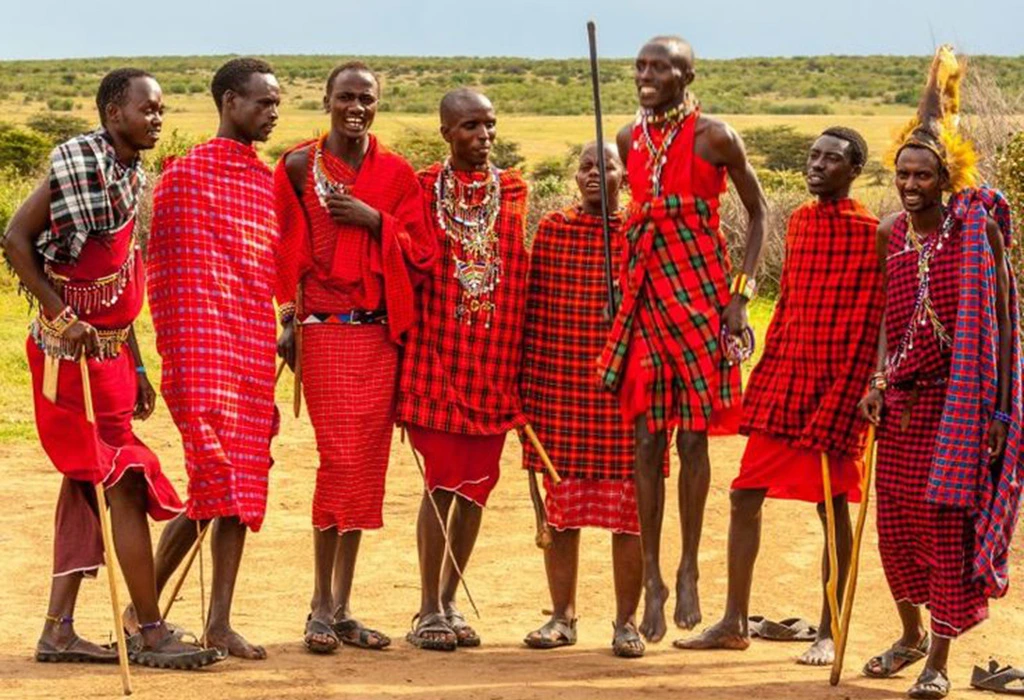When people think of East Africa, they often picture vast savannahs, roaming wildlife, and the iconic image of a proud Maasai warrior draped in red shuka fabric. The Maasai people, with their distinct customs, vibrant attire, and deep-rooted cultural traditions, are among the most recognized indigenous communities in Africa. A visit to their villages—whether in Kenya or northern Tanzania offers an enriching experience for travelers eager to connect with local heritage. Things You Need to Know Before Visiting the Maasai.
However, before stepping into a Maasai homestead, also known as a manyatta, it’s essential to approach the visit with awareness, respect, and understanding. Cultural tourism can be incredibly rewarding, but only when it’s approached thoughtfully. This guide outlines everything you need to know before visiting the Maasai to ensure your experience is respectful, ethical, and meaningful—for both you and your hosts.
Who Are the Maasai?
The Maasai are a Nilotic ethnic group primarily found in southern Kenya and northern Tanzania. Traditionally semi-nomadic pastoralists, they are known for their strong warrior culture, cattle-centric lifestyle, and unique social structures. Although modernization has brought change to Maasai life, many communities continue to uphold traditional practices while navigating the complexities of contemporary East Africa.
The Maasai speak Maa, a language in the Eastern Nilotic branch of the Nilo-Saharan family, though many also speak Swahili and English, especially in areas frequented by tourists.
Why Do Tourists Visit Maasai Villages?
Tourists are often drawn to the Maasai for their visual distinctiveness and rich traditions. Visits typically include:
- Learning about their way of life, from herding and house-building to ceremonies
- Witnessing traditional dances, such as the adumu (jumping dance)
- Touring their homesteads and gaining insight into daily routines
- Purchasing handmade beadwork and crafts
- Hearing personal stories from Maasai community members
But these experiences are more than entertainment—they offer valuable cultural exchange. That’s why it’s important to approach them with mindfulness.
What Should You Know Before You Go?
1. Is It Ethical to Visit Maasai Villages?
This is one of the most important questions travelers ask. The answer depends on how the visit is organized. Ethical tourism supports the host community financially, socially, and culturally. When visits are arranged directly through Maasai cooperatives or reputable tour operators that compensate the community fairly, they can provide income and help preserve cultural heritage.
Avoid mass tourism stops that treat the Maasai like a “living museum” without giving them agency or financial benefit. Always ask questions like: Things You Need to Know Before Visiting the Maasai.
- Who owns and operates the experience?
- How are the Maasai compensated?
- Is the visit agreed upon by the community?
Ethical cultural tourism respects the dignity of the people involved.
2. What Should You Wear When Visiting the Maasai?
Dress modestly and respectfully. The Maasai themselves dress in colorful shukas, often leaving shoulders or legs uncovered—but as a visitor, you should avoid shorts, tank tops, or revealing clothes. This shows cultural sensitivity and earns respect.
Neutral, breathable clothing is recommended, especially if you’re walking through dusty or sun-exposed areas. You may also consider carrying a wrap or scarf to adjust your coverage as needed.
3. Can You Take Photos of the Maasai?
Yes, but only with permission. The Maasai are often photographed because of their striking appearance, but it is crucial to ask before pointing a camera. Many Maasai are comfortable with photography especially when they are part of a tourism initiative—but respect must always come first.
Some may request a small fee in exchange for being photographed. This is common and reasonable when arranged openly and respectfully. Always prioritize human dignity over “getting the shot.”
4. What Can You Expect During a Visit?
A typical visit begins with a warm welcome. You may be greeted with singing or a ceremonial dance. You’ll likely be shown around the village, learn about the structure of the homes (built by women), see livestock pens, and perhaps visit a local school.
Maasai hosts often explain their traditions—marriage customs, age-set systems, rites of passage, and spiritual beliefs. You may also be invited to join in a dance, try local food, or learn about bead-making.
Expect a blend of education and cultural immersion but remember, you are a guest in someone’s home. Humility, attentiveness, and gratitude go a long way.
5. Should You Buy Beaded Jewelry and Crafts?
Yes, and this is often encouraged. Buying directly from the women who make beadwork helps support local families. The intricate designs are not only beautiful but rich with symbolism related to gender, age, and marital status.
Pay a fair price and avoid haggling aggressively. Your purchase supports economic empowerment and cultural preservation.
6. What Language Do the Maasai Speak—and Can You Communicate?
The Maasai primarily speak Maa, but many also know Swahili and some English, especially in tourist-accessible areas. Don’t worry if you don’t speak the language—guides will help interpret.
Learning a few Swahili or Maa phrases is always appreciated. Even simple greetings like:
- “Sopa” (Hello in Maa)
- “Asante” (Thank you in Swahili)
These efforts are a sign of respect and create a more authentic connection.
7. How Should You Behave During Ceremonies or Rituals?
If your visit coincides with a community ritual or celebration, treat the event with reverence. Ask your guide or host what is appropriate—some ceremonies may be private or sacred and not open to outsiders.
If invited to observe or participate, do so respectfully:
- Follow instructions quietly
- Don’t interrupt or make jokes
- Avoid flashy photography
Remember, you are witnessing a cultural tradition that may be hundreds of years old.
8. Are the Maasai Willing to Talk About Modern Issues?
Absolutely. Many Maasai are deeply engaged with issues of land rights, education, environmental change, and cultural transformation. Younger generations often balance tradition with modern education and technology.
Ask open-ended questions if appropriate. For example:
- How has life changed in your community in recent years?
- What challenges does your community face today?
- What traditions are most important to you?
These conversations can be enlightening and offer a richer understanding of contemporary Maasai life.
Final Tips for a Respectful Visit
- Listen more than you speak: Be curious, but avoid interrogating. Let stories unfold naturally.
- Be present: Avoid checking your phone or texting during village tours or ceremonies.
- Respect personal space: Not everyone is comfortable being touched or hugged.
- Follow your guide’s lead: Let them set the tone for what’s appropriate.
Why Visiting the Maasai Can Be Life-Changing
A visit to a Maasai village isn’t just a photo opportunity—it’s a window into a unique way of life, shaped by resilience, community, and harmony with nature. When done ethically, such visits foster mutual understanding, cultural appreciation, and lasting memories.
As a traveler, you carry the responsibility to approach with openness, humility, and a genuine desire to learn. In return, you’ll be rewarded with insight, connection, and a deeper respect for the people who have called East Africa home for centuries.
So before you go, prepare not just your camera and walking shoes—but also your heart and mind. Visiting the Maasai, when done right, is far more than tourism. It’s a human experience that leaves you richer than when you arrived. Things You Need to Know Before Visiting the Maasai.




